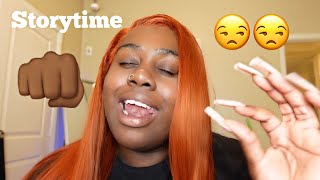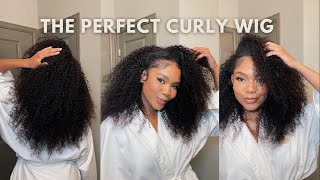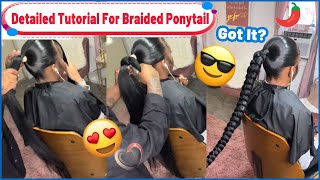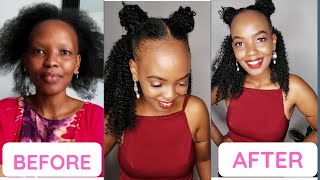Our Top Tips To Relaxing Or Texlaxing Your Hair At Home Like A Professional

Contents:
- The week before the relaxer
- The day before the relaxer
- Relaxer day
- Applying the relaxer
- Smart application for virgin relaxers
- Apply only to the new growth for touch ups
- There really is no need to comb
- Apply to weaker areas
- Rinsing the relaxer
- Neutralizing
- Restoring your hair’s strength
- Styling your hair
Before reading this article you may want to read this post on the different relaxing options open to you, namely relaxing, texturizing and texlaxing, all the pros and cons of each plus photos of the various techniques so that you can better visualize your final results.
If you are among those who are considering a return to relaxers, you will be aware that lately many naturals are returning to relaxers armed with the knowledge of how to better care for their hair. This post is meant to help you learn how to do this chemical service from the comfort of your home with professional results but if you are more comfortable having a professional relax your hair for you then please continue to get this done at a salon.
With that said, whether you are interested in a light relaxer, usually called texlaxing, or you intend to go bone straight, getting salon-worthy results will be dependent on your techniques.
If the term texlaxing is foreign to you just think of it as an under-processed relaxer. Texlaxing is the use of a mild or purposely weakened relaxer to slightly alter the hair’s curl pattern without straightening the hair completely. You achieve this either by cutting the application time in half according to the manufacturer’s suggestions, or by adding oil or conditioner to the relaxer to slow down it’s action on your hair in order to retain some of your natural texture.
Texlaxing can be beneficial to you as it doesn’t break most of the bonds of your hair in the way that a regular relaxer does. Your hair though semi-relaxed would have more strength in it than hair that is relaxed bone straight.
The first thing you need to remember is that any chemical process can result in harm to your health if you do not take the necessary precautions and follow the guidelines for using the product.
Much of the bad rap that relaxers get is due in part to improper application and processing times. So to eliminate damage to your scalp you will want to read the application instructions carefully and follow them.
Learn more on how to pick out the best relaxer for your hair type.
The week before the relaxer
Do a protein treatment at least two weeks but preferably the week before applying a relaxer. Because the process of relaxing strips the hair of protein, fortifying the hair before the relaxer is applied will help your strands to better cope with the process.
You will also want to have your hair in a low manipulation style all week to avoid causing unnecessary breakage before the relaxer. Also avoid scratching your scalp as this may cause micro abrasions that could cause relaxer burns.
The day before the relaxer
You may choose to base your scalp with a product containing petroleum jelly the night before your relaxer.
Relaxer day
If you didn’t base your scalp the night before, you may choose to do it on relaxer day. Always base your scalp whether you have a sensitive scalp or not. If you scratched your scalp in the previous week, you have may have small scalp abrasions that could lead to severe chemical burns or scarring. Basing your scalp reduces the potential for chemical burns and is general good practise for relaxer application. You will also want to apply the petroleum jelly* all along the hairline, sides, ears, nape or anywhere else that may inadvertently come into contact with the relaxer.
For virgin hair, if you did a strand test, remember to apply the petroleum jelly generously on the strand and avoid getting relaxer on it during the application process.
For touch ups, you will also want to generously apply the petroleum jelly* to the previously relaxed hair to protect it in case it comes into contact with the relaxer.
At this point you will want to start sectioning your hair. Divide your hair into 4 if you are doing a virgin relaxer.
If you are doing a touch up, you may find it helpful to pre-section your hair into thin 1/4 -1/2 inch parts loosely twisted below the line of demarcation. This makes it easier during the application phase as you will not have to part your hair as you are applying the chemical. This greatly speeds up your application time leading to flawless results.
If you have areas that are finer or weaker they should be sectioned separately from coarser hair to prevent over-processing. In fact, it is recommended that the weaker areas be relaxed last to cut down on the length of time they will be exposed to the chemicals.
Applying the relaxer

Relax without any distractions. This means no kids, no phone calls, no engaging in conversation even if you have someone assisting you with your relaxer application. There should be no multitasking of any kind. Your entire focus should be on timing and observation of the chemical process.
Set a timer for the full application time for your hair’s texture minus 5-8 minutes required for smoothing the relaxer into your hair. For example, if your full processing time is 18 minutes, set your timer for 10-13 minutes. This is time by which you should have finished thoroughly applying relaxer to all the sections.
You will want to start the application process in the areas where your new growth is coarsest. For most people this will be in the crown. The nape and hairline should be left to last as hair in these areas is finer and more susceptible to thinning and breakage. You will find that these areas will process faster. Also keep in mind that heat from the scalp causes the relaxer to process faster.
Since heat is a factor; always relax in a cool environment. Do not relax your hair in hot or humid environments as additional heat will cause overprocessing!
Smart application for virgin relaxers
You can avoid over and under processing your hair by paying close attention to the application process. You should leave at least an inch near the scalp when you apply relaxer to natural hair for the first time. Also leave an inch toward the end or tips of your strands as they are the weakest part of the hair and are very susceptible to breakage.
You can then apply the relaxer to the tips and closer to the scalp after about half your processing time has gone by.
Apply only to the new growth for touch ups
It is important to wait until you have enough new growth before relaxing, 10 weeks plus being the ideal minimum. This ensures that the line of demarcation between previously processed hair and the new growth is clearly visible. Still, be careful while applying relaxer to avoid getting it on the previously relaxed hair.
There really is no need to comb
Never comb the relaxer through your hair! It really isn’t necessary and your hair will process perfectly well whether you comb it or not. In fact combing through your hair while it has relaxer will stretch the strands and weaken it substantially leading to breakage. Use the back of a comb, your fingers or a tint brush to smooth your sections and check for the desired level of straightness.
Apply to your weaker areas
Apply to weaker areas
When your timer goes off, reset it for the remaining time and apply the relaxer to the previously sectioned off weaker areas, your edges and nape while smoothing each section to ensure that each strand is covered and has processed sufficiently.
Rinsing the relaxer
Rinse the relaxer for up to five minutes without only light manipulation of the scalp or hair. You may want to use a strong shower stream to assist in removing the relaxer from your hair as quickly as possible.
Depending on the relaxer system you use, you may be required to apply a protein treatment to your hair straight after rinsing the relaxer but before neutralizing. This allows the treatment to deeply penetrate your hair strands prior to neutralizing which seals the cuticles shut. For most relaxer systems however, neutralizing will come first.
Neutralizing
Your entire relaxer day could fail if you do not neutralize your hair thoroughly. Lather the neutralizing shampoo through your hair, leave it in for 5 minutes and then rinse. Repeat this a second time leaving the shampoo lather in your hair for 5 minutes again before rinsing. With your third lather, leave the neutralizing shampoo in your hair for 10 minutes before rinsing. This makes absolutely sure that the relaxer has been thoroughly neutralized and that your hair has returned to it’s normal PH level.
If you are using a color indicator shampoo, continue to lather and rinse until you can no longer detect the slightest color change in the lather. The lather should be completely white.
Restoring your hair’s strength
At this stage it would be prudent to restore your hair’s strength with a protein deep conditioner or a bond building treatment. These treatments ensure that your chemically treated hair remains strong and healthy. It would be best to use heat while deep conditioning* to ensure proper uptake of the ingredients.
Styling your hair
After rinsing out the conditioner, you may proceed to styling. Choose low manipulation styles on relaxer day so that your newly relaxed hair and scalp can recover. It may be prudent to wait to use direct heat like blow dryers* or flat irons* after the next wash day. In the meantime, a good roller set with a hooded dryer* or simple air drying would be the ideal choice to style your hair.
Using these tips will enable you to safely relax or texlax your hair at home like a real professional!




